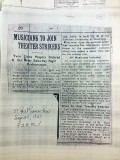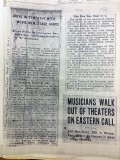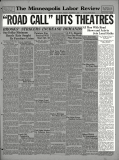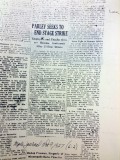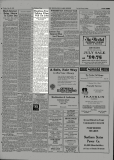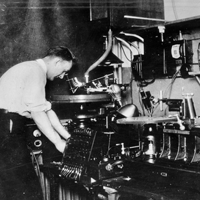
American Federation of Musicians
The American Federation of Musicians represents professional musicians in the United States and Canada. It was founded in 1896.
From the AFM website:
1927 – With the release of the first “talkie”, The Jazz Singer, orchestras in movie theaters were displaced. The AFM had its first encounter with wholesale unemployment brought about by technology. Within three years, 22,000 theater jobs for musicians who accompanied silent movies were lost, while only a few hundred jobs for musicians performing on soundtracks were created by the new technology.
1928 – While continuing to protest the loss of jobs due to the use of “canned music” with motion pictures, the AFM set minimum wage scales for Vitaphone, Movietone and phonograph record work. Because synchronizing music with pictures for the movies was particularly difficult, the AFM was able to set high prices for this work.
Early 1930’s – The AFM concludes first industry-wide agreement in the U.S. with motion picture industry.
1930 – Still working to save the jobs of musicians who played music for silent movies, the union established the Music Defense League to gain public support for its fight against “canned music” in movie theaters.
1935 – The AFM secured relief for unemployed musicians through the United States government’s Works Projects Administration.
1938 – The AFM obtained its first “use” provisions in its motion picture agreement.
